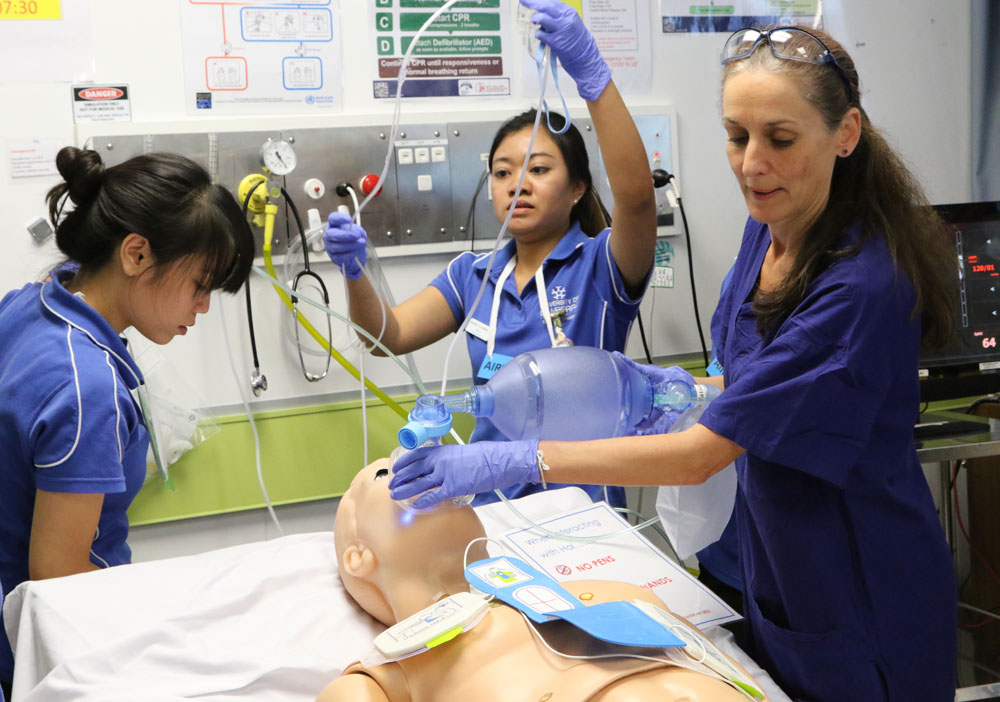Matthew Hogan
12 May 2016: University of Canberra nursing students participated in National Simulation Week last week by engaging in a medical emergency exercise on a state-of-the-art, lifelike simulator.
The third year undergraduate students took part in the exercise as part of a professional practice unit, under the supervision of unit convenor Kathryn Sainsbury.
"In this unit, we prepare students going out on their clinical placement," Ms Sainsbury said. "It's the last workshop for the semester and we're aiming to bring everything that we've learnt in the simulated learning environment together, so that students can recognise a deteriorating patient and respond appropriately."
Using the HAL patient simulator, manufactured in the USA by Gaumard Scientific, the students were assigned roles and were required to do a physical assessment and make clinical decisions and respond to an emergency situation.
"This is a chest pain scenario so the patient rings his buzzer and he says that he can't breathe and his chest hurts," Ms Sainsbury explained. "Then he deteriorates and the students are challenged to respond to the patient's changing condition and take the appropriate nursing action."
With blinking eyes, a pulse and breathing movements and sounds among its features, the lecturer said HAL is as close to the real situation as students can get.
Following the exercise, where the students successfully resuscitated HAL using an automated external defibrillator, oxygen masks and adrenaline injections, the team had the opportunity to review their handiwork.
"This is one of the more novel parts of the simulation; we use video for debriefing, so the students are actually able to critique their performance and reflect and think about how they can improve their practice in the future," said Ms Sainsbury.
Working throughout the semester in a simulated ward environment, students not only focus on nursing skills, but also professional communication, decision making, clinical documentation and teamwork.
"The students have been challenged to work as a team and seek advice and clarification – a skill that is essential to new graduate nurses," Ms Sainsbury said.
"A range of simulation methods have been used, these include part task trainers like arms that allow blood specimen collection, simulated monitoring systems on iPads and injection pads.
"The goal has been to provide an environment for safe hands on practice with equipment they would expect to see in the clinical setting."
National Simulation Week is organised by Simulation Australasia and promotes the many forms of simulation technology used in education and training organisations.



